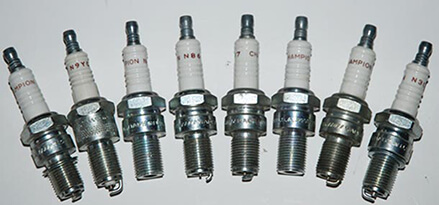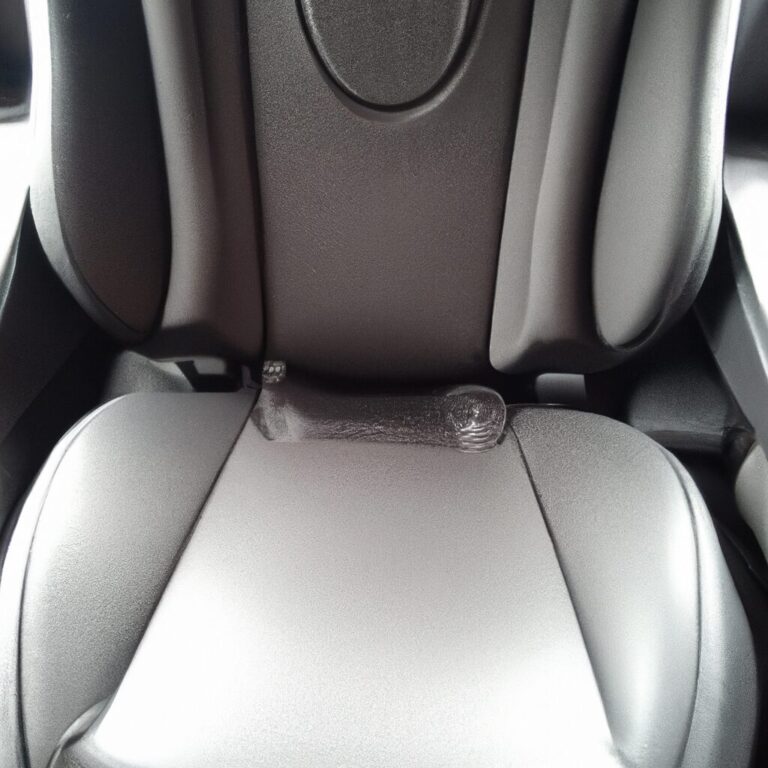Spark Plug Wont Go in All the Way
If the spark plug won’t go in all the way, check for debris or crossed threads. Facing difficulty inserting the spark plug fully into the engine can be frustrating.
When dealing with this issue, it’s essential to diagnose the problem methodically to ensure proper installation and prevent any potential engine damage. By following a few simple steps and being attentive to detail, you can identify and resolve the cause of the spark plug not seating correctly.
We will discuss common reasons why a spark plug may not go in all the way and provide practical solutions to rectify the issue effectively. Let’s dive into how to troubleshoot and fix this problem so you can get back on the road swiftly and safely.

Credit: www.mobil.com
Common Causes For A Spark Plug Not Going In All The Way
Discovering that a spark plug won’t go in all the way can be frustrating and can cause potential problems with the performance of your vehicle. There are several common causes for a spark plug not threading in properly, which can lead to misfiring and engine issues. Identifying these common causes can help you diagnose and resolve the issue efficiently.
damaged Threads
If the threads in the spark plug hole or on the spark plug itself are damaged, the spark plug won’t be able to screw in properly. This can happen due to cross-threading or wear and tear over time.
incorrect Thread Size Or Type
Using a spark plug with the wrong thread size or type for your engine can prevent it from going in all the way. It’s crucial to ensure that you are using the correct spark plug according to the manufacturer’s specifications.
spark Plug Misalignment
If the spark plug is even slightly misaligned when being installed, it may not thread in properly. This can occur if the spark plug hole is dirty, or if there is debris present that prevents the spark plug from aligning correctly. Ensuring a clean and secure fit is essential for proper installation.
Effects Of A Spark Plug Not Being Fully Inserted
Effects of a Spark Plug Not Being Fully Inserted:
Poor Combustion
If the spark plug is not fully inserted, poor combustion occurs, leading to inefficient burning of fuel.
Loss Of Engine Performance
An improperly inserted spark plug results in loss of engine performance, causing rough idling and decreased power.
Potential Damage To Engine Components
Inadequately installed spark plugs can cause damage to engine components, such as the pistons and cylinder walls.
Steps To Properly Insert A Spark Plug
When inserting a spark plug, it is crucial to follow the proper steps to ensure a secure fit and optimal performance. The following steps outline the process for properly inserting a spark plug into a cylinder head:
Inspect The Spark Plug And Cylinder Head
Before insertion, examine the spark plug and cylinder head for any signs of damage or wear.
Clean The Spark Plug Threads
Thoroughly clean the spark plug threads to remove any dirt, debris, or residue that may hinder proper insertion.
Use A Thread Chaser Or Tap To Repair Damaged Threads
If the threads on the cylinder head are damaged, use a thread chaser or tap to restore them before inserting the spark plug.
Use The Correct Spark Plug Size And Type
Ensure you are using the appropriate spark plug size and type specified for your engine to avoid compatibility issues.
Ensure Proper Alignment And Tightening
Align the spark plug carefully and tighten it to the recommended torque specifications to prevent over-tightening or under-tightening.

Credit: m.youtube.com
When To Seek Professional Help
If you encounter issues with the insertion of spark plugs, it’s important to know when to seek professional assistance. Certain situations may require the expertise of a professional mechanic to avoid further damage to your vehicle.
Severe Engine Problems
If you experience severe engine problems after attempting to insert a spark plug, such as unusual noises, rough idling, or misfiring, it’s crucial to seek professional help immediately. Ignoring these signs can lead to extensive damage to the engine and other components.
Repeated Issues With Spark Plug Insertion
Continual difficulties inserting spark plugs despite following correct procedures may indicate underlying issues with the engine or spark plug threads. Professional intervention can identify and address these recurring problems effectively.
Lack Of Mechanical Experience Or Expertise
For those with limited mechanical knowledge or expertise, encountering difficulties with spark plug insertion can be daunting. Seeking professional help ensures that the problem is accurately diagnosed and resolved, preventing further complications.
Preventive Measures To Avoid Spark Plug Insertion Problems
To prevent spark plug insertion problems where the plug won’t go in all the way, follow these preventive measures: ensure the correct spark plug size, apply anti-seize compound on the threads, use a thread chaser to clean the spark plug hole, avoid over-tightening the plug, check for any obstructions and damaged threads, and consult a professional if the issue persists.
Preventing spark plug insertion problems is essential for maintaining the optimal performance of your vehicle’s engine. By following a few simple preventive measures, you can avoid issues such as spark plug not going in all the way. In this section, we will discuss three key measures to ensure a hassle-free spark plug installation.
Regular Maintenance And Inspection
Regular maintenance and inspection play a crucial role in preventing spark plug insertion problems. It is important to inspect the spark plugs periodically and replace them if necessary. Additionally, check for any signs of damage, such as cracks or excessive wear on the spark plug threads. By staying vigilant and addressing any maintenance requirements promptly, you can prevent potential issues before they escalate.
Proper Torque Specifications
Adhering to the manufacturer’s recommended torque specifications is vital for a successful spark plug installation. Each vehicle has specific torque requirements that must be followed precisely. Over-tightening or under-tightening the spark plugs can lead to insertion problems or even damage the threads. To ensure accurate torque, use a torque wrench and tighten the spark plugs as per the specifications provided by the manufacturer.
Avoid Cross-threading
Avoiding cross-threading is crucial to prevent spark plug insertion problems. Cross-threading occurs when the spark plug is not aligned properly with the threads of the cylinder head. This misalignment can lead to damaged threads and difficulties in tightening the spark plug correctly. To prevent cross-threading, always start threading the spark plug by hand and make sure it turns smoothly. Avoid applying excessive force while threading to ensure proper alignment.
Using anti-seize compound can also be beneficial in certain situations. Anti-seize compound reduces friction between the spark plug threads and the cylinder head, making it easier to install and remove the spark plugs. However, it is important to use the anti-seize compound sparingly and only on the specified areas of the spark plug threads.

Credit: blogproautomotive.com
Frequently Asked Questions Of Spark Plug Wont Go In All The Way
What Happens If A Spark Plug Isn’t All The Way In?
If a spark plug isn’t all the way in, it can cause misfiring, engine problems, and poor performance. It may also lead to damage over time. Ensure the spark plug is properly installed for optimal engine function.
What To Do If A Spark Plug Won’t Thread In?
If a spark plug won’t thread in, check for cross-threading or damaged threads. Use a thread chaser tap to clean and realign the threads. Avoid forceful tightening to prevent damaging the plug or the engine.
How Can Spark Plugs Be Installed Wrong?
Spark plugs can be installed incorrectly through improper gap spacing or over-tightening, leading to misfiring. Additionally, wrong placement or using the wrong type can cause engine damage. Always follow manufacturer guidelines for proper installation.
Why Is My Spark Plug Not Getting A Spark?
The spark plug may not be getting a spark due to a faulty ignition coil or spark plug wire, loose connections, or a damaged spark plug. Ensure all components are properly connected and in good condition to restore spark. Additionally, check for any corrosion or dirt that may hinder conductivity.
Why Won’t The Spark Plug Go In All The Way?
There could be several reasons, such as cross-threading, improper gap, or debris in the spark plug hole.
How Can I Fix A Spark Plug That Won’t Go In All The Way?
First, make sure you’re using the correct spark plug for your engine. Check for cross-threading or debris and clean or re-tap the spark plug hole if necessary.
Can The Wrong Spark Plug Prevent It From Going In All The Way?
Yes, using the wrong spark plug can lead to compatibility issues, causing it to not fit properly in the spark plug hole.
Conclusion
In sum, ensuring that the spark plug is properly seated is crucial for optimal engine performance. By following the proper installation process and troubleshooting any issues, you can prevent damage and drive with confidence. Keep an eye on the thread size, reach, and torque specifications to ensure a secure fit.
Proper maintenance ensures smooth running engines.

